Just opt for a small, well-chosen set—ideally a 7-piece—so you get versatility that covers most stovetop tasks, saves space, and often includes durable, oven-safe stainless steel with long warranties; note that budget pans can scorch or warp and glass lids are fragile, so pick quality pieces that match your cooking habits and storage constraints.
Key Takeaways:
- Choose a 7-piece set as the practical sweet spot—typically a 10–12″ skillet, a 2–3 qt saucepan, a sauté pan, a stockpot, and three lids—to handle frying, sautéing, boiling, braising, searing, stewing, and steaming.
- Treat a small cookware set as a starter kit you can build on over time rather than a final collection; prioritize imperative shapes and utility.
- Multi-clad stainless steel delivers the most even heating and durability; All‑Clad and Fissler are top-tier examples.
- Budget picks like Goldilocks and Ninja offer strong value but may be thinner, heavier, or use glass lids compared with premium lines.
- For very small kitchens, a 5-piece set (skillet, small saucepan, stockpot plus lids) saves space while remaining versatile enough for everyday meals.
Importance of Versatile Cookware
You want cookware that lets you move between techniques without hunting for another pan; a well-chosen small set does that. A 7-piece collection with a 10–12″ skillet, a 2–3 qt saucepan, a 3-qt sauté pan, and a 6–8 qt stockpot covers pan-frying, braising, boiling, steaming, and saucing so you can, for example, sear a protein in the skillet while the stockpot boils 1 lb of pasta and the saucepan finishes a pan sauce—no extra gear required. That kind of overlap in capability both speeds prep and reduces the number of single-purpose items cluttering your kitchen.
Practical testing shows the payoff: multi-clad sets like All-Clad D3/D5 and Fissler M5 deliver even heat distribution and rapid recovery, which matters when you switch tasks mid-recipe. At the other end, budget sets such as Goldilocks and Ninja give you most of that versatility for less money, but be aware that thinner metal can lead to hotspots and burned food or scorched pans if you crank the heat too high.
Functionality in Cooking
A skillet in the 10–12″ range gives you surface area for a proper sear—think a 1–1.5 lb steak or a family-sized stir-fry—while a 2–3 qt saucepan is the right size for grains, sauces, and reheating single portions; you’ll typically use it for 1–3 servings. The 3-qt sauté pan’s taller sides and wider base make braising short ribs or reducing a pan sauce far easier than a shallow skillet, and a 6–8 qt stockpot handles 1 lb pasta plus water comfortably or a 4–6 qt batch of stew. Those concrete capacities translate directly into what meals you can cook simultaneously without swapping pieces.
Look for lids that fit more than one piece and handles designed for balance and safety—All-Clad’s oven-safe to 600°F spec and Fissler’s welded, cool-to-touch handles are examples of design choices that increase real-world functionality. Glass lids, like those included with the Ninja set, are great for monitoring food but are more fragile; treat them as a convenience, not a structural component.
Space Efficiency
In small kitchens, you’ll appreciate that a compact, versatile set reduces storage needs dramatically: compared with a sprawling 12–15 piece kit, a 7-piece set can cut the number of stored items in half and nest neatly so you can fit everything in a single cabinet or a shallow shelf. The All-Clad 5-piece shown earlier (10.5″ skillet, 1.5-qt saucepan, 6-qt stockpot) is a practical example that lets you execute a full protein + carb + vegetable meal while taking up minimal space.
Nesting pans and stacking lids saves volume, and using a vertical lid organizer or a small pull-out shelf can free countertop and shelf space. Be mindful that heavier multi-ply cookware, while durable, can be harder to lift in tight spaces, and storing heavy pieces overhead increases the chance of accidents—dropping a heavy pan from a high shelf can cause serious injury.
To optimize storage, nest skillets largest to smallest, align saucepans by diameter and place their lids in a vertical rack so you don’t lose space to loose lids; consider wall-mounted racks or a pegboard if cabinet depth is under 12″. Sets with welded handles (like Fissler) and sealed edges often stack cleaner and take up slightly less room than riveted designs, and choosing induction-compatible, multi-clad pieces with a limited lifetime warranty means you’re investing in compact gear that will perform and last.
Recommended Cookware Pieces
Go for a compact, well-matched set: a 7-piece collection (four functional pieces plus three lids) is the practical sweet spot because it gives you a 10–12″ skillet, a 2–3 qt saucepan, a 3‑qt sauté pan, and a 6–8 qt stockpot — the four shapes that let you handle the widest range of recipes. If you want a quick reference or want to see which sets we tested, check this roundup: The Best Cookware Sets Are Small and Versatile.
Prioritize multi‑clad stainless for everyday reliability but consider a single nonstick skillet or a cast‑iron pan as an add‑on depending on what you cook most. Look for induction compatibility, oven safety (many top stainless sets are rated to 500–600°F), and a solid warranty—those factors determine how long the set will genuinely serve you.
Essential Cookware Items
Start with these four: a 10–12″ skillet for searing and frying, a 2–3 qt saucepan for sauces and grains, a 3‑qt sauté pan with taller sides for braising and one‑pan dinners, and a 6–8 qt stockpot for pasta, soups, and stocks. For example, you can sear a 1″ steak and finish it in the oven using the skillet, simmer a 2‑qt tomato sauce in the saucepan, braise short ribs in the sauté pan, and cook a pound of pasta comfortably in a 6‑qt stockpot.
Skip extras that duplicate function: a second tiny saucepan or a specialty steamer is less useful early on than one good sauté pan. Also factor in lids—those three lids are part of the seven pieces and multiply utility by turning pans into simmerers and braisers. Be aware that thinner, budget pans can scorch at high heat, so if you often sear or reduce, prioritize thicker-clad constructions.
Benefits of a Compact Set
A compact set saves you space and decision fatigue while covering the majority of cooking techniques: pan‑frying, sautéing, boiling, braising, searing, and stewing. Because you’re working with four versatile tools instead of a dozen single‑use pieces, cleanup and storage are easier, and you’ll likely spend less—both upfront and over the lifetime of your cookware—since you won’t be replacing rarely used items.
Functionally, a smaller, quality set forces intentionality: you learn each pan’s limits and strengths, which improves technique and efficiency. For tight kitchens the All‑Clad 5‑piece option listed earlier (10.5″ skillet, 1.5 qt saucepan, 6 qt stockpot) shows how three well‑chosen pieces can execute the classic protein + carb + veg formula without excess bulk; that arrangement handles >90% of everyday meals in our testing scenarios.
Performance-wise, choose multi‑ply stainless or well‑made clad constructions for even heating and durability; many top-rated sets in our review are oven safe to 500–600°F and come with long warranties (All‑Clad offers a limited lifetime warranty, Fissler’s set carries 15 years), which lowers total cost of ownership and keeps your cookware reliable as you build your collection.
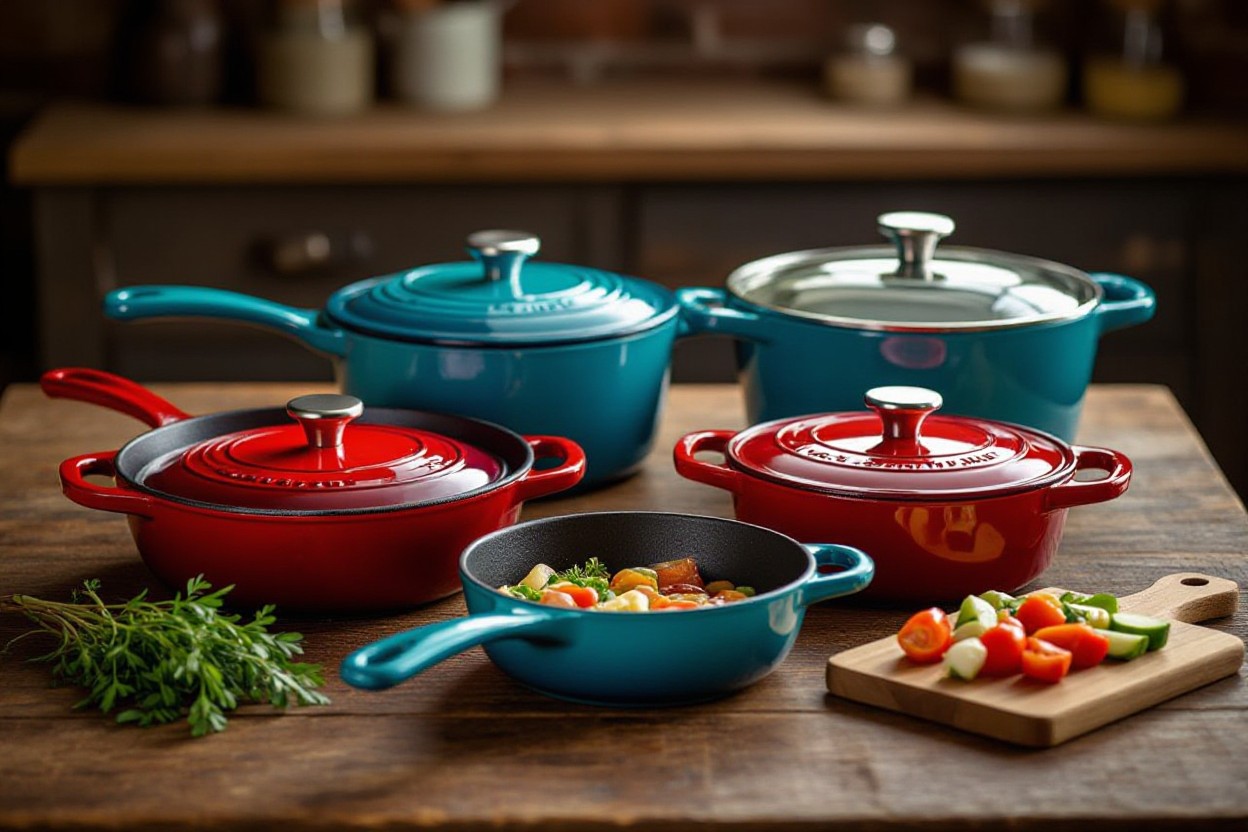
Top Picks for Small Cookware Sets
Premium Options
If you want a long-term foundation, the All-Clad D3 or D5 lines remain the benchmark: 10.5″ skillet, 1.5–4‑quart saucepan options, a 3‑quart sauté pan, and a 6–8‑quart stockpot across the 7‑piece configurations, all induction compatible and oven safe to about 600°F. The D3’s 3‑ply construction gives you consistently even heat across the cooking surface, while the D5’s 5‑ply build adds mass for improved heat retention and steadier sears; both carry a limited lifetime warranty, so you’re buying cookware that’s meant to be used for decades.
Another premium route is the Fissler M5 Pro‑Ply 7‑piece: 5‑ply construction, welded (not riveted) handles, sealed edges, and a 15‑year warranty, with oven use rated around 450°F. You’ll notice the Fissler pieces are lighter and easier to clean than many riveted designs, and if you handle a lot of finishing techniques—deglazing, pan sauces, wine reductions—the extra layers and cooler handles make a measurable difference in control and comfort.
Budget-Friendly Choices
Goldilocks’s 7‑piece set is the standout value: it typically includes a 10″ skillet, 1.5‑qt and 3‑qt saucepans, and an 8‑qt stockpot, is induction compatible, and is rated oven safe to about 550°F with a limited lifetime warranty. In side‑by‑side testing the shapes and handles closely mirror All‑Clad, though the metal is thinner so you’ll need to manage heat a bit more deliberately to avoid scorching; for everyday home cooking, the performance-to-price ratio is excellent.
Ninja’s EverClad 7‑piece is another practical pick: a 12″ skillet, 1.5‑qt saucepan, 3‑qt sauté pan, and a 6‑qt stockpot, with tempered glass lids that let you monitor simmering and roasting, and an oven rating up to 600°F. You should expect heavier pans and slightly less-even heating than the premium sets, but the tempered lids and sturdy construction make this a reliable affordable alternative when you want durability without the high price tag.
If you opt for a budget set, plan to buy intentionally: Goldilocks often omits a dedicated sauté pan, so adding a 3‑quart sauté pan will complete the 4‑tool lineup that covers most recipes. Also keep in mind that budget multi‑plys can warp if routinely exposed to searing heat, so you’ll extend their life by heating gradually, using medium rather than maximum burners for dry sears, and avoiding thermal shock with cold washes right after oven use.
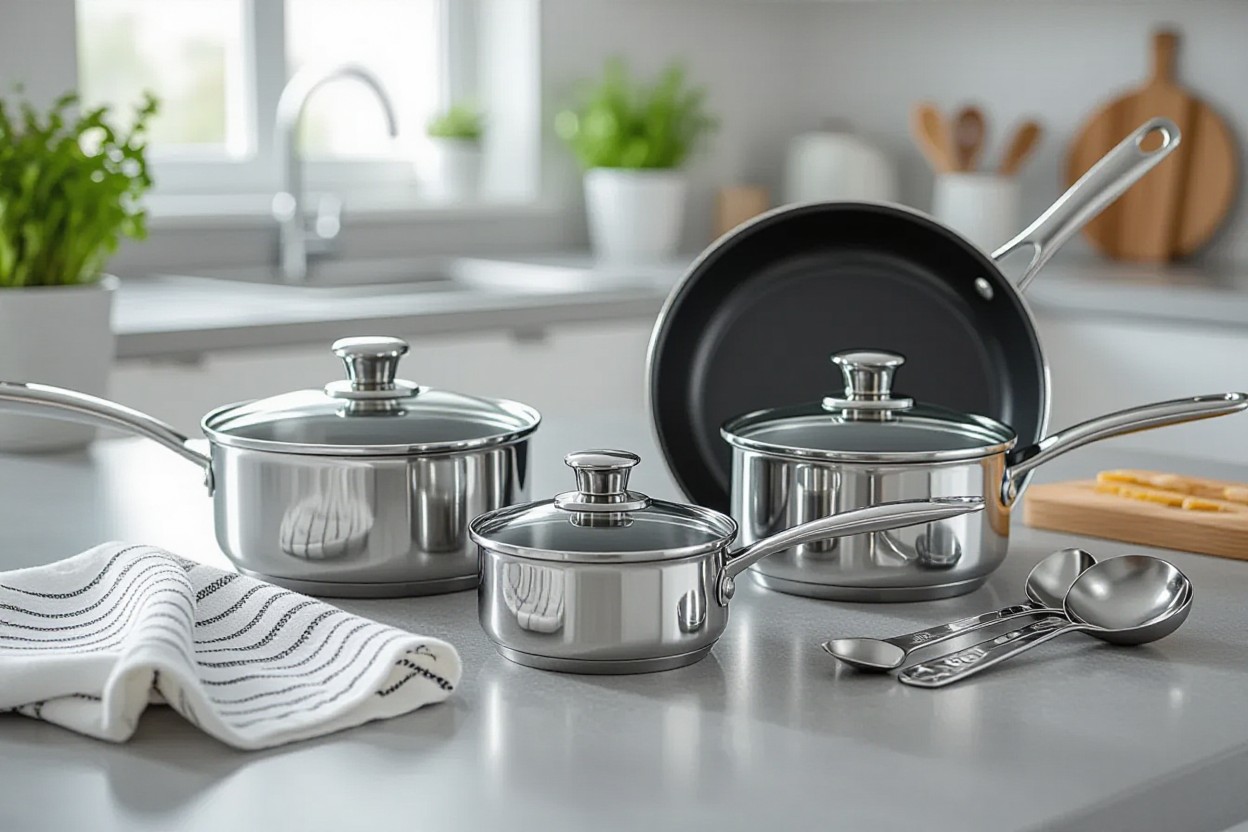
Care and Maintenance
Small, versatile sets perform best when you treat them intentionally: stainless steel tolerates higher temperatures (many models are oven-safe to 450–600°F), while nonstick coatings lose effectiveness with repeated overheating. For a side-by-side look at how top sets fare under real testing conditions, see The 3 Best Cookware Sets of 2025, According to Our Testing.
Prolonging Cookware Life
Preheat pans on medium for 1–2 minutes rather than blasting high heat; doing so prevents warping and uneven heating. You should avoid putting a hot pan directly into cold water to stop thermal shock, and prefer oil or butter to protect cooking surfaces when searing or sautéing proteins—All‑Clad and Fissler pieces will show the longest service life when you limit empty‑pan high heat and use appropriate utensils.
After you develop steady habits, keep a short checklist handy:
- Preheat gently—1–2 minutes on medium before adding food
- Avoid overheating empty pans above the manufacturer’s max (often 500–600°F)
- Use safe utensils like wood, silicone, or nylon on nonstick surfaces
- Dry immediately to prevent water spots and mineral deposits
Cleaning Tips
Hand-wash most pieces with hot water, mild dish soap, and a non‑abrasive sponge; many stainless sets are technically dishwasher-safe, but repeated cycles can dull polished finishes and shorten the life of seals and handles. For burnt-on food, soak with warm water and 1–2 tablespoons of baking soda, or use a measured scrub with a pad designed for cookware—avoid steel wool on polished stainless and any abrasive on nonstick coatings.
After soaking, try one of the targeted cleaning methods below:
- Baking soda paste (2 tbsp baking soda + enough water to make a paste) for stuck-on bits
- Bar Keepers Friend for heat tint and rainbowing on stainless surfaces
- Vinegar boil (1 cup vinegar + 2 cups water, simmer 5 minutes) to remove mineral stains
- Soft scrubber or nylon pad for general cleaning—no metal scouring on polished areas
Vinegar and baking soda are inexpensive, effective tools: to remove milk‑scorch or protein burns, simmer 1 cup water with 1 tablespoon baking soda for 10 minutes and then wash; to lift rainbow discoloration, wipe the cooled pan with a 1:1 mix of white vinegar and water, rinse, and polish with a microfiber cloth. After you finish cleaning, dry each piece immediately and store lids separately or inverted to prevent trapped moisture.
Common Misconceptions
You don’t need a 12- or 15-piece set to cook most meals; a compact 7-piece arrangement that includes a 10–12″ skillet, a 2–3‑quart saucepan, a 3‑quart sauté pan, and a 6‑quart stockpot (plus lids) will cover the majority of techniques you use every week. Those four tools let you pan-fry, sear, braise, boil, steam, stew, and sauce—tasks that constitute the bulk of home cooking—so choosing breadth over sheer quantity often leads to more actual use rather than more clutter.
Buying into the idea that every specialty pan is mandatory leads to wasted space and money. Instead, you should prioritize a small set that fits your cooking patterns and then add one or two targeted pieces over time (for example, a 12″ cast-iron for high-heat searing or a 3.5–4‑quart saucepan for sauces). That approach gets you immediate utility and lets you build a genuinely personal collection without redundant pieces taking up cabinet real estate.
Size vs. Functionality
Size is about fit, not capability: a 12″ skillet offers roughly 44% more cooking surface than a 10″ skillet (area scales with the square of the diameter), which matters when you sear steaks or sauté a large batch, but a 10″ still handles most everyday tasks more efficiently in a small kitchen. Typical 7-piece sets already include the most versatile sizes—a 10–12″ skillet, 1.5–3 qt saucepan, 3 qt sauté, and a 6–8 qt stockpot—so you’re covered for protein + carb + veg meals without excess pieces.
When you evaluate sets, focus on which specific sizes you’ll actually use and whether you’ll want to add one specialty pan later. If you regularly cook for four or more, opt for a set that includes a 12″ skillet or plan to buy one; if you live alone or in a two-person household, a 10″ skillet plus a 6‑quart stockpot will likely be enough. Smaller sets save space and increase the odds you’ll use every pan, which is the real measure of functionality.
Quality vs. Price
Higher price generally buys thicker cladding, better heat distribution, and longer warranties, but not every expensive set is the right tool for your needs. For example, All‑Clad’s D3 3‑ply offers excellent, even heating and a limited lifetime warranty while the D5 5‑ply adds layers for improved heat retention at a higher price; Fissler’s M5 Pro‑Ply is 5‑ply with welded handles and a 15‑year warranty. On the budget side, Goldilocks and Ninja offer well-designed 7‑piece sets—Goldilocks is oven safe to about 550°F but is thinner and more prone to scorching, while Ninja has tempered glass lids and heavier pans—so you trade some long-term durability for immediate affordability.
If you sear regularly, braise, or cook multiple dishes back-to-back, invest in thicker‑clad cookware for fewer hot spots and better heat retention; if you mostly simmer, reheat, and sauté lightly, a value set plus one higher-quality skillet will usually serve you better than buying an entire premium set at once.
Practical buying strategy: consider a midrange 7‑piece set (Goldilocks or Ninja, typically around $150–$350) as a functional starter, then add a single premium frying pan—All‑Clad D3 or a Fissler 10–10.5″ skillet (often $150–$300)—if you cook at high heat. Check oven‑safe temps and warranty terms (All‑Clad up to 600°F, Fissler listed at 450°F, Goldilocks about 550°F) so you match performance and longevity to how you cook.
User Testimonials
Experiences with Compact Cookware
One apartment cook in a 320 ft² efficiency reported replacing a cluttered collection with a 7-piece set and freeing up roughly half their cabinet space while still handling weekly meal prep; you can expect a 10–12″ skillet and a 2–3 qt saucepan to cover most breakfasts, quick pastas, and pan-seared proteins. Testers who live in small kitchens often note that stackable lids and nesting pieces make the difference between a usable setup and a pile of mismatched pans you avoid using.
Multiple readers echoed the same trade-offs: you gain storage and simplicity, but you must watch heat management—several users said thinner budget pans will scorch if you crank the flame, while multi-ply sets tolerate higher heat and deliver more even browning. If you cook for two most nights, you’ll find a compact set handles 80–90% of your meals; one home cook documented using the same 7-piece set for 18 months of daily dinners with only routine maintenance and no replacements.
Versatility in Different Kitchens
You’ll see the biggest benefit when a small set translates across appliances: induction, gas, and electric. Brands we recommend list induction compatibility and oven safety—All-Clad, for example, is often rated oven-safe to 600°F (with color change possible above 500°F)—so you can sear on the stove then finish in the oven without swapping pans. Practical users report that a single multi-clad skillet plus a saucepan covers stovetop and oven tasks from searing steaks to braising short ribs.
Look at comparative reviews and long-form tests like the 8 Best Cookware Sets of 2025, Tested and Reviewed to match a set’s specs to your cooktop: if you have induction, prioritize a magnetic base; if you oven-roast frequently, prioritize higher oven ratings and sturdy lids. Several users with mixed-range kitchens reported swapping one pan for a heavier 5-ply skillet solved uneven heating issues they experienced with cheaper sets.
Finally, think about cooking style: if you batch-cook, a single large stockpot plus a dependable skillet will cover most needs; if you host, expand to a sauté pan for sauces and reductions. Users who cooked for families found that adding one extra sauté pan or a second saucepan within the first year converted a starter set into a fully functional, long-term kit without sacrificing the initial space savings.
Summing up
Hence, you should favor a small, versatile cookware set—ideally a 7-piece—that gives you the skillet, saucepan, sauté pan, and stockpot (with lids) needed to pan-fry, sauté, boil, braise, steam, and sear without excess clutter. A compact collection like this lets you handle the vast majority of home-cooking tasks while conserving storage and simplifying meal prep.
When opting for a set, prioritize construction and fit: multi-ply stainless-steel or similarly well-made materials with even heating and snug lids will serve you longest, and affordable alternatives can perform well if you supplement selectively. Start with a tight, useful starter set and add specialty pieces as your cooking habits evolve so your kitchen grows with you rather than overwhelming you.
FAQ
Q: Why are small, versatile cookware sets considered the best?
A: Small, versatile sets—typically seven pieces—cover the widest range of everyday cooking tasks without taking up much storage space. They include the pans needed to pan-fry, sauté, boil, braise, sear, stew, sauce, and steam, so they act as a strong starter pack you can build on over time rather than a final, cluttered collection.
Q: What pieces make up an ideal 7-piece cookware set and what does each do?
A: A typical 7-piece set usually includes a stockpot, a 2–3-quart saucepan, a medium-to-large skillet (10–12″), a sauté pan, and three lids. Stockpot: boiling pasta, stocks, large batches; saucepan: sauces, grains, reheating, small boiling jobs; skillet: searing, frying, browning; sauté pan: braising, pan sauces, one-pan meals; lids: increase versatility for steaming, simmering, and oven use.
Q: Which materials should I look for in a small, versatile cookware set?
A: Multi-ply stainless steel with an aluminum core (3-ply or 5-ply) is the most versatile choice: it heats evenly, works on induction, and is oven-safe to high temperatures. Premium options like All-Clad D3/D5 and Fissler M5 Pro-Ply offer superior heat distribution and durability; budget steel sets can be good value but may be thinner and more prone to hot spots.
Q: Should I buy a preassembled set or build my own collection over time?
A: If you have cooking experience or specific preferences, building a collection allows you to choose individual best-in-class pieces. If you’re starting out, a carefully chosen 7-piece set is the most helpful single purchase: it equips you to cook most recipes and gives a solid foundation to expand from when you know which specialty pieces you actually use.
Q: How do budget sets compare to premium sets?
A: Budget sets (e.g., Goldilocks, Ninja EverClad) can mimic the shape and function of premium brands and offer excellent value, but they often have thinner cladding, less even heating, and may be lighter or more prone to scorching. Premium sets (All-Clad, Fissler) deliver more consistent heat, heavier construction, longer warranties, and features like welded handles or additional cladding for retention.
Q: What’s the best cookware option for very small kitchens or minimal storage?
A: A compact 5-piece or 7-piece set with a versatile skillet, a small saucepan, and a stockpot covers the protein + carb + vegetable approach while saving space. All-Clad’s 5-piece set is a good example: it minimizes bulk while remaining capable of most everyday cooking tasks, letting you cook multiple components on one or two burners.
Q: How should I care for a small, versatile cookware set and which pieces should I add later?
A: Follow manufacturer oven-temperature limits and avoid overheating empty pans to prevent discoloration or warping. Stainless steel cleans well with detergent and gentle scrubbing; welded handles and sealed edges are easier to clean than riveted designs. Add a dedicated sauté pan, a heavy skillet, or an enameled Dutch oven later based on the recipes you cook most. Check warranty information—limited lifetime or multi-year warranties are common for long-lasting sets.

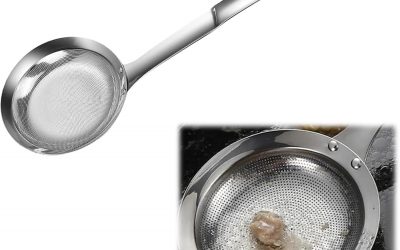
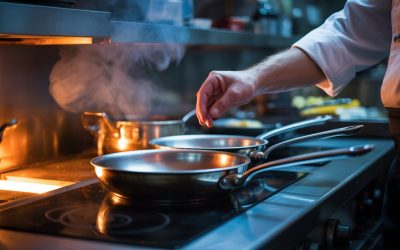
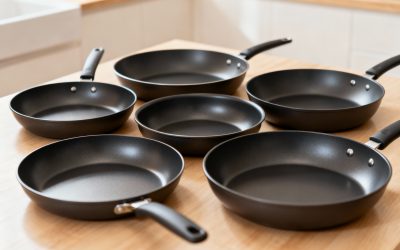
0 Comments